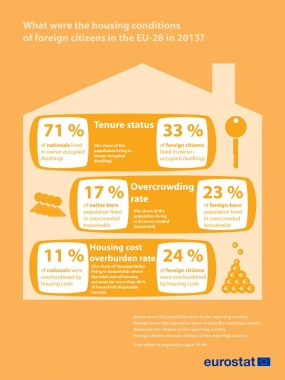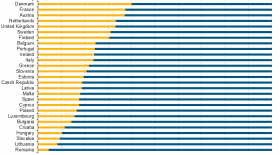Housing and living conditions of migrants
Eurostat releases updated statistics
Brussels, 15 June 2015 | Published in Social
Housing and living conditions are considered to be fundamental aspects of migrants’ integration. New statistics from Eurostat show that migrant population has to some extent different housing patterns from nationals, and differences are also evident between EU and non-EU foreign citizens.
While less than one third of nationals are tenants in the EU, the proportion of tenants in the population foreign citizens is significantly higher. Around two out of three foreign citizens are living in rented dwellings, while the remaining are owners – with a higher proportion of people in owner-occupied dwellings among foreign EU citizens compared to non-EU.
The foreign-born population is more likely to live in an overcrowded household than the native-born population. In 2013, in the EU the overcrowding rate for the foreign-born population aged 20–64 was 23 % compared with 17 % for the native-born. Among the foreign-born, the non-EU-born had a significantly higher rate (27 %) than the migrants born in one of the EU Member States (16 %). The highest overcrowding rates for the foreign-born population were observed in Italy (48 %), Croatia (46 %), Greece (45 %) and Hungary (42 %).
In 2013 at EU level, around 1 in 4 foreign citizens was considered as ‘overburdened’ by housing costs (i.e. they spent over 40 % of their disposable income on housing), compared to 1 in 10 nationals.
